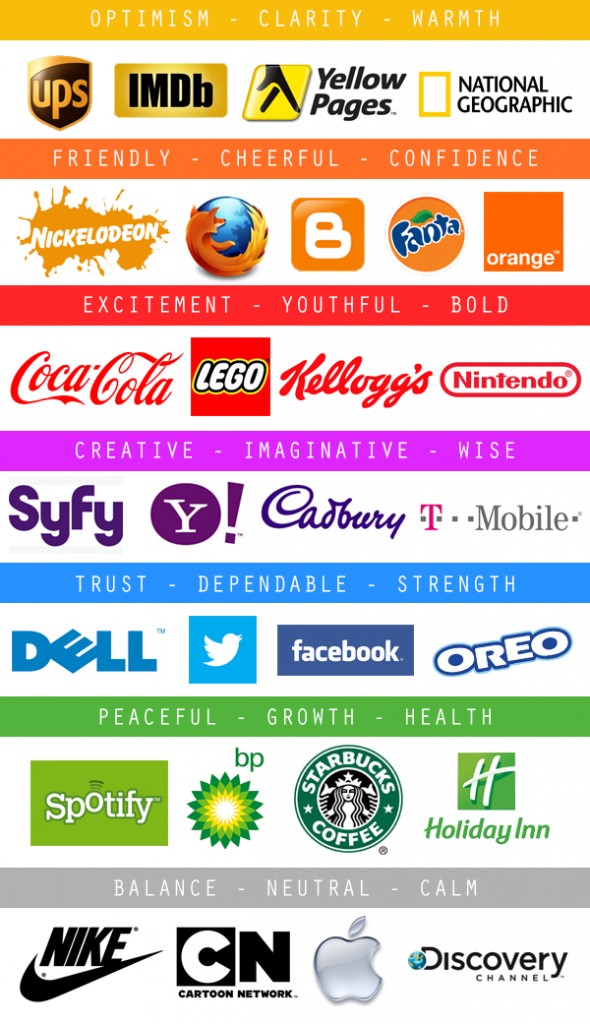The psychology of color and its ability to affect certain emotions has always been a topic of interest to marketers and advertising professionals. If you could crack the code and determine which colors made people feel specific emotions, wouldn’t you want to harness that power for your business’ advertising?
Unfortunately, pairing certain colors with certain emotions isn’t as easy as connecting the dots on paper and the reality of this theory is that there’s no true standardization of color versus emotion. There is, however, a correlation between certain colors in advertising and the connotations they have.
Simply put: certain colors in advertising may not make you feel certain emotions, but they can cause you to associate certain traits and attributes.
Spinning the color wheel
The key to understanding what connotations a certain color might have or determining which colors align with certain traits comes in looking at past and current marketing—the efforts of existing brands have paved the way for how people might view your brand in a certain color scheme. Take a look at a couple of examples:
Blue branding and advertising can be appropriately correlated with adjectives like “hardworking” or “reliable” or “strong” because of today’s blue-branded companies that reinforce these traits. Examples would be companies like Lowes, Pfizer, Volkswagen, Dell and even digital companies like Facebook or Twitter.
Red is more often associated with excitement and boldness in today’s advertising realm, thanks mostly in part to the companies who have paved the way for these traits in modern advertising. Look to companies like Target, CNN, Coca-Cola, Nintendo or even Pinterest and YouTube to reinforce these traits with their red imagery.
The colors from the examples above don’t make you feel a certain way or inspire a particular emotion, but they do have undeniable ties to the companies mentioned with them. And, in an effort to connect the dots, you’ll likely have perceptions about those brands that can be reinforced by their choice in color scheme.
Take a look at some of the other color associations that can be made and take a moment to think about whether or not you associate these traits to the colors and the companies:
- Black/White—balanced, clean, authoritative—Apple, New York Times, Wikipedia.
- Green—earthy, growth, health—Android, Tropicana, BP, John Deere.
- Orange—cheery, confident, friendly—Firefox, Blogger, Nickelodeon.
- Yellow—optimism, clarity, warmth—McDonalds, Sprint, Nikon.
Again, these color associations tend to be more like guidelines because personal experience or opinion will always outshine the general, but it’s worth realizing the widespread association of these colors and brands when you’re positioning your own marketing and branding.
Back up your color
Color is not the end-all, be-all of branding and marketing when it comes to garnering a reputation—in fact, it’s only a stepping stone that’s part of a whole continuum of efforts. Solidifying your place among companies with a similar color scheme means focusing your messaging to align with the color and your business’ ideologies. As an example:
If your plumbing business is trying to establish itself as a local authority on plumbing, you’re likely going to pick a blue color scheme—it fits your ideology and plays on the water aspect of your business. Now, in order to bring your brand full circle, so that the blue color truly lends itself to your brand, you’ll need to emphasize traits of similar blue-branded companies: hardworking, reliable, strong, dependable, etc.
When your brand projects the same color and attributes as other brands, the perceptions that people form in their minds will be stronger because they will associate the color and traits more directly. With enough exposure to similar brands and similar messaging, a color can become defined by a repertoire of traits! This is truly where the secret to great branding by color lies.
The power of color
There’s a reason that certain colors remind us of certain traits—it’s probably because some piece of advertising or the constant affirmation of a marketing message has led us to associate these things together. If your brand can accomplish this task with a certain set of traits and a defined color, you might just be able to carve out a reputation for yourself that’s exactly what you want it to be.
